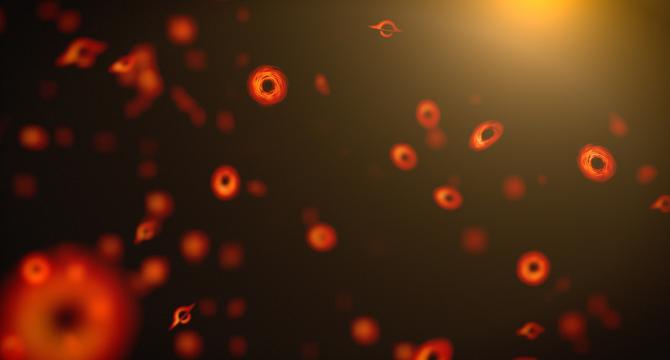Universe Today
3w
198

Image Credit: Universe Today
Could Primordial Black Holes Be Hiding in Plain Sight?
- Primordial Black Holes (PBHs) could form part or all of what we call dark matter. A new paper suggests they may be hiding in places so unlikely that nobody ever thought to look there: objects as large as hollowed out planetoids or asteroids and objects as small as rocks here on Earth. Evidence for PBHs could be found in these objects since they could be captured either during or after their creation. Once inside a rocky body, the PBH would consume the liquid core, hollowing it out and leaving it empty. Detection is potentially much cheaper and easier with this method than the other scenarios.
- Black holes form when massive stars reach the end of their lives and suffer gravitational collapse. Physicists hypothesize that PBHs formed in the early Universe from extremely dense pockets of sub-atomic matter that collapsed directly into black holes.
- These PBHs could be candidates for dark matter. None have been observed so far, making them purely hypothetical. New research in Physics of the Dark Universe suggests researchers are not looking in the right places.
- Fast-moving PBHs can leave microscopic tunnels in planets as large as hollowed out planetoids or asteroids. If the asteroid or other body suffers an impact, the PBH could escape, leaving nothing but a hollow shell behind, which could be detectable.
- If the object's density is too low for its size, that's a good indication it's hollow. Studying an object's orbit with a telescope is enough to reveal its hollowness. PBHs could also leave microscopic tunnels in rocks and other objects on Earth.
- The James Webb Space Telescope or the Laser Interferometer Space Antenna are proposed ways of detecting PBHs. "The chances of finding these signatures are small, but searching for them would not require much resources and the potential payoff, the first evidence of a primordial black hole, would be immense," said Stojkovic.
- Cosmology is kind of at a standstill while we wrestle with the idea of dark matter. Could PBHs behave the way the authors suggest and be detected in this manner? The authors explain that these hypothesized PBHs do not require expensive equipment and long preparation, and the payoff might be significant.
- "We don't need a straightforward extension of the existing models. We probably need a completely new framework altogether," said Stojkovic.
- What's different about these hypothesized PBHs is detection. In other scenarios, space telescopes, gravitational wave observatories, or even monitoring distant quasars in microwaves are required to detect them.
- Detection is potentially much cheaper and easier. "You have to look at the cost versus the benefit. Does it cost much to do this? No, it doesn't," said Stojkovic in a press release.
Read Full Article
11 Likes
For uninterrupted reading, download the app